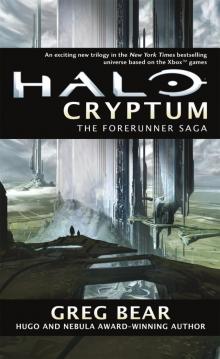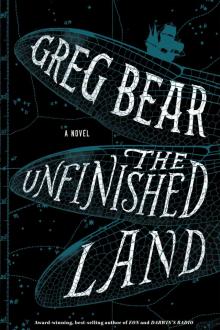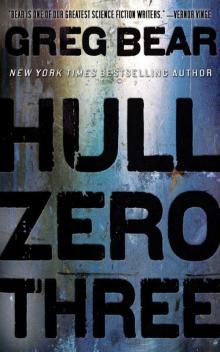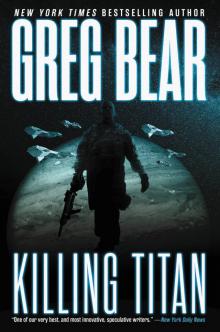Queen of Angels Read online
Page 11
It made sense that Albigoni had his estate away from all of this, yet the publisher had not followed the reverse tide of those westerners who had moved thousands of miles east to reclaim the central states and the old catastrophe of New York.
“Is that it?” Martin asked the car. They had turned onto a private road through the shade of canyon live oaks and now approached a sprawling five floor complex apparently made of wood, with white walls and a brick colored roof and a great broad central tower. The building looked familiar to Martin though he had surely never seen it before. The controller, a dedicated low level thinker, said, “This is our destination, sir.”
“Why does it look familiar?” he asked.
“Mr. Albigoni’s father had it built to resemble the old Hotel Del Coronado, sir.”
“Oh.”
“He was very fond of that hotel. Mr. Albigoni’s father duplicated much of it here.”
Pulling into a high broad entryway Martin leaned forward gazing at brick steps and brass rails leading up to a broad glass and wood door, stained woodwork or white painted woodwork, visualizing the raw materials dragged with heavy equipment screaming from forests decades ago; here perhaps Brazil or Honduras, there Thailand or Luzon, woodflesh felled by great mechanical jaws, denuded by wirebrush maws, sawed on the spot into timber, dried and banded, graded, severed ends painted, packed and shipped.
Martin did not enjoy wood furniture. It was his peculiarity to feel in plants and especially trees a higher consciousness uncomplicated and profound; no minds no self no Country but the simplest response to life imaginable: growth and sex without ecstasy or guilt, death without pain. He did not express these beliefs to anyone; they were part of his secret midden of private thoughts.
Paul Lascal came down the steps and stood beside the car as the door opened with a sigh. He extended his hand and Martin shook it while still surveying the woodwork, lips parted like a child’s in heads up wonder.
“Glad to have you aboard, Dr. Burke.”
Martin nodded politely. He pocketed the released hand and asked softly, “Where to?”
“This way. Mr. Albigoni is in the study. He’s been reading all of your papers.”
“Good,” Martin said, though it was really neutral information; Albigoni’s understanding was not required. He would not be going up Country. “I met with Carol,” he told Lascal in a wide dark hall dark granite flooring wood vaults corbels columns exotic woods mahogany bird’seye maple teak walnut others he could not identify as disgraceful in their way as the skins of extinct animals, though of course the trees were not extinct. The time in which they had been cut down and carpentered had been a bad time, a sinful time, but the trees had survived and now flourished. New farmgrown genetically altered wood was cheap and therefore little used by the wealthy, who now preferred artificial materials made rare by the cost and energy of their creation. Albigoni’s was a house caught between the age of gluttony and the age of proletarian plenty.
Lascal had said something he had not heard. “Pardon?”
“She’s a fine researcher,” Lascal repeated. “Mr. Albigoni is very pleased to have the services of both of you.”
“Yes; well.”
Lascal preceded him into the study: more wood, dark and bookrich with perhaps twenty or thirty thousand volumes, the thick sweet dust smell of old paper, wood again, age and rot in suspension.
Albigoni sat in a heavy oak chair before a slate. Rotating diagrams of human brains in cross section, rostral, caudal, ventral, crossed the slate. He raised his head slowly, blinking like a lizard, face pale and old with grief. He might not have slept since they last met.
“Hello,” Albigoni said flatly. “Thank you for agreeing and coming. There isn’t much time. Beginning the day after tomorrow the IPR will be open to us and all of your facilities will be available. There are some points I’d like to have explained before then.”
Lascal dragged a chair forward and Martin sat. Lascal remained standing. Albigoni swiveled elbows on chair arms and leaned forward like an old man, broad Roman patrician face, lips that once smiled naturally, friendly eyes now empty. “I’m reading about your triple focus receptor. It picks up signals from circuitry established in the skin by special neurological nano. It’s designed to track activity at twenty-three different points around the hippocampus and corpus callosum.”
“Yes. If we’re going up Country. It’s versatile and can do other jobs in other areas of the brain.”
“It doesn’t disturb the subject?” Albigoni asked.
“No long-term effects. The nano withdraws to skin surface and is retrieved; if it somehow doesn’t withdraw, it simply breaks down, inaccessible metals and proteins.”
“But the feedback probe…”
“Excites neurochemical activity through selected pathways, neural gates; creates transmitters and ions which the brain interprets as signals.”
Albigoni nodded. “That’s intrusive.”
“Intrusive but not destructive. All these stimuli are naturally reversible.”
“But you don’t actually explore the subject’s mind directly, one to one.”
“No. Not in first-level exploration. We use a computer buffer. My program in a computer interprets the signals received from the subject and recreates the deep structure imagery. The researcher explores this deep structure in computer simulation and if necessary engages the feedback stimulus for a queried response. The subject’s mind reacts and that reaction is reflected in the simulation.”
“Could you explore the mind directly?”
“Only in level two exploration,” Martin said. “I’ve only done that once.”
“My engineers tell me level one exploration is not going to be possible. Your equipment was tampered with by investigators six months ago. Your simulation or buffer computer is in Washington DC right now. Lawyers have impounded it for comparison with imported torture devices used by Selectors. Are you willing to engage our subject mind to mind?”
Martin looked around the room, working his chin back and forth. Smiled and leaned back in the chair. “This is a new game, gentlemen,” he said. “I didn’t know about the impounding. The federals are completely off track; my equipment is nothing like a hellcrown. Now I have no idea what I can do or not do.”
“The computer cannot be retrieved. We can find another—”
“I built that computer myself,” Martin said. “Grew it from a nano pup. It’s not a thinker, but it’s almost as complicated as the brains it simulates.”
“Then the project is impossible,” Albigoni said almost hopefully.
Martin clenched his jaw muscles and stared out the window. Blue and electric green winter roses blossomed in a neat hedge; green lawn dusty green oaks golden brown hills beyond.
The final push of the sword. To make the decision and then have it all taken away. Too much. “It’s probably still possible. Whether it’s advisable or not…”
“Dangers?”
“Direct mind to mind is more strenuous on the subject and the researcher. Less time in the Country is allowed. Probably no more than an hour or two. An older, smaller computer I designed could partially interface and boost comprehensibility; it acts as an interpreter so to speak but not as a buffer. I hope that equipment is still available.”
Albigoni looked to Lascal, who nodded. “If our inventory is correct, it is.”
“How did you reopen the IPR?” Martin asked.
Lascal said that did not really concern him. He was right; it was idle curiosity. It did not matter so long as it was true. What were the limits to the power of a man with wealth? They might all be found out, the result of a rich man’s fapup or the folly of an unknown subordinate.
“Why does the Country of the Mind exist, Mr. Burke?” Albigoni asked. “I’ve read your papers and books but they’re quite technical.”
Martin gathered his thoughts though he had explained this a hundred times to colleagues and even the general public. This time he would not allow any artisti
c embellishments. The Country was fabulous enough in plain.
“It’s the ground of all human thought, of all our big and little selves. It’s different in each of us. There is no such thing as a unified human consciousness. There are primary routines which we call personalities, one of which usually makes up the conscious self, and they are partially integrated with other routines which I call subpersonalities, talents, or agents. These are actually limited versions of personalities, not complete; to be expressed, or put in control of the overall mind, they need to be brought forward and smoothly meshed with the primary personality, that is, what used to be called the consciousness, our foremost self.
“Talents are complexes of skills and instincts, learned and prepatterned behavior. Sex is the most obvious and numerous—twenty talents in full grown adults. Anger is another; there are usually five talents devoted to anger response. In an integrated, socially adapted adult older than thirty, only two such anger talents usually remain—social anger and personal anger. Ours is an age of social anger.”
Albigoni listened without nodding.
“For example, the Selectors are dominated by social anger. They have confused it with personal anger. Social anger talents control their primary routines.”
“Talents are personalities,” Lascal said uncertainly.
“Not fully developed. They are not autonomous in balanced and healthy individuals.”
“All right,” Albigoni said. “That much is clear. What other kinds of talents are there?”
“Hundreds, most rudimentary, nearly all borrowing or in parallel with the primary routines, all smoothly integrating, meshing”—he knitted his knuckles gearwise and twisted his hands—“to make up the healthy individual.”
“You say nearly all. What about those routines and subroutines that don’t borrow, that are most likely to be—” He referred to his notes. “What you call subpersonalities or close secondaries.”
“Very complex diagram,” Martin said. “It’s in my second book.” He nodded at the slate’s screen. “Subpersonalities or close secondaries include male/female modeling routines, what Jung called animus and anima…Major occupation routines, that is, the personality one assumes when carrying out one’s business or a major role in society…Any routine that could conceivably inform or replace the primary personality for a substantial length of time.”
“Being an artist or a poet, perhaps?”
“Or a husband/wife or a father/mother.”
Albigoni nodded, eyes closed and almost lost in his broad face. “From what little research I’ve managed to do in the last thirty six hours, I’ve learned that therapy is more often than not a stimulus of discarded or suppressed routines and subroutines to achieve a closer balance.”
Martin nodded. “Or the suppression of an unwanted or defective subpersonality. That can sometimes be done through exterior therapy—talking it out—or through interior stimulus, such as direct simulation of fantasized growth experiences. Or it can be done through physical remodeling of the brain, chemical expression and repression, or more radically, microsurgery to close off the loci of undesired dominant routines.”
“In a sexual offender, for example…”
“Typical therapy for a sex offender is to destroy the loci of an undesired dominant sexual routine.”
“Very carefully.”
“Indeed,” Martin said. “Dominant routines can subsume large sectors of primary personality. Separating them out is a delicate art.”
“And a primitive art, until you came along with your work at IPR.”
Martin agreed modestly.
“Radical therapy was only fifty percent effective until you made the procedures more precise.” Albigoni raised his dull eyes to Martin’s and smiled faintly. “Thereby putting the final touches on a transformation of law and society in the last fifteen years.”
“And earning myself a scapegoat’s bell,” Martin said.
“You discovered psychological dynamite, Dr. Burke,” Albigoni said. “My company has published over six hundred books and seventy five LitVids on the subject in the past six years.”
It had not dawned on Martin until now what connection he had with Albigoni. “You published a couple of books about the IPR and me…Didn’t you?”
“We did.”
Martin hummed and put a finger to his lips. “Not very flattering books.”
“They weren’t meant to please you.”
Martin narrowed his eyes. “Did you agree with their conclusions?”
“Mr. Albigoni is not required to agree with the books or LitVids he publishes,” Lascal said, somehow managing to hover without moving from his position standing catercorner between them.
“I agreed with them at the time,” Albigoni said. “Your work seemed dangerously close to removing the last shred of our private humanity.”
Martin’s face reddened. An old accusation that had never lost its pain. “I explored new territory and described it. I did not create it. Don’t blame the conduit for the lightning.”
“When a man reaches up to touch the clouds, can you blame him for the stray bolt? But we’re babbling, Dr. Burke. I have no argument with you now. I need your talents to…help a friend. To purge myself of a soul eating hatred. To help us all understand.”
Martin averted, pushing aside the ever fresh anger. “All of these subroutines and personalities are laid on a foundation that is older than spoken language and culture and society. Some parts of the foundation are older than man. The iceberg is long frozen before the snow falls on the tip.”
“So we may have to investigate further, below personalities and agents and talents, to find the source of a deviance.”
“Not often,” Martin said. “Most human mental illness is based on surface trauma. Even in people with neurotransmitter and other maladjustments, the deep structures of the brain function properly. Defects are more likely to occur in regions of the mind brain structure that are newer, in evolutionary terms. Less perfected, less weeded out. However, some inherited deep defects are so subtle that they haven’t affected breeding potential, at least in our species…Standard evolutionary processes won’t remove those.”
“If Emanuel’s deviance is below the surface, can you find it, study it, and correct it?”
“No, I don’t think so,” Martin said. “But as I said, such fundamental deviance is rare.”
“So is mass murder. Have you ever diagnosed and corrected a mass murderer?”
“It was never my job to do therapy, actually,” Martin said. “I’m a researcher more than a clinician. I’ve talked with therapists who used my theories and some of my techniques on people who have killed…But never mass murderers. To my knowledge, no court judgment in the last ten years has allowed a mass murderer to be therapied and released.” Raphkind law and order. No rest for the truly wicked; neither death or health shall be offered them.
Albigoni returned to the slate. “Your second book, The Borderlands of the Mind, uses a lot of quotes from various sources to describe what you call the Country of the Mind. Yet you say the Country is different for each of us. If it’s so different, how can we recognize it as a place?”
“By tapping the mind at a level where the contents and structures are similar in all of us. The truly personal upper layers of the mind are not directly accessible, not right now, at any rate. The lower layers have different qualities, but they can be understood if we pass them through our own deep interpreters. That’s what the triplex probe does, under controlled conditions. Our conditions will be less controlled without the interfacing computer.”
“I still do not understand what is meant by Country of the Mind.”
“It is a region, an unceasing and coherent dreamstate, built up from genetic engrams, pre verbal impressions and all the contents of our lives. It is the alphabet and foundation on which we base all of our thinking and language, all our symbologies. Every thought, every personal action, is reflected in this region. All of our myths and religious symb
ols are based upon its common contents. All routines and subroutines, all personalities and talents and agents, all mental structures, are reflected in its features and occupants, or are reflections of them.”
“It is truly a countryside?”
“Something like a countryside or city or some other environment.”
“With buildings and trees, and people, and animals?”
“Of sorts. Yes.”
Albigoni frowned. “Like memories of buildings, and so on?”
“Not exactly. There may be analogies between the Country and the external world, but the external objects we see are put through several filters, selected by the mind for usefulness as symbols, as part of an overall mental language. Most of that language is fixed before we are three years old.”
Albigoni nodded, apparently satisfied. Lascal listened without expression. “And by inspecting Emanuel’s Country, you can tell us what might have motivated him to murder my daughter and the others.”
“I hope to,” Martin said. “Nothing is certain.”
“Nothing is certain but grief,” Albigoni said. “Paul, show Dr. Burke our materials on Emanuel.”
“Yes, sir.”
Martin followed Lascal out of the study and into a small media studio next door. “Please sit down,” Lascal said, pointing to a smoothly upholstered reclining chair. The chair was surrounded by black sound rods like the bottom half of a bird cage. Two small projectors on a black plate directly before the chair swiveled soundlessly as he sat, searching for the proper position of his eyes.
“Mr. Albigoni knew most of what you explained already,” Lascal told him quietly as the equipment adjusted itself for the presentation. “He just wanted to hear it in your own words. Helps him to digest what he’s read and seen.”
“Of course,” Martin said, taking a sudden dislike to Lascal. Smoothly professional, devotedly selfless; Albigoni could ask for no more subservient a lackey.
The Emanuel Goldsmith multi-media show began with an interview conducted in 2025 on an early LitVid net. Caption floating in simulated gold letters before him (the hallmark of Albigoni’s reference library): First LitVid Appearance/Following Publication of Second Book of Poems “Never Knowing Snow” October 10 2025 LVD6 5656A. Lascal explained the chair’s custom controls and left Martin alone in the room.

 Foundation and Chaos
Foundation and Chaos Halo: Silentium
Halo: Silentium Blood Music
Blood Music Halo: Cryptum
Halo: Cryptum Halo: Primordium
Halo: Primordium The Unfinished Land
The Unfinished Land Hardfought
Hardfought Hull Zero Three
Hull Zero Three Slant
Slant Multiverse: Exploring the Worlds of Poul Anderson
Multiverse: Exploring the Worlds of Poul Anderson Take Back the Sky
Take Back the Sky Nebula Awards Showcase 2015
Nebula Awards Showcase 2015 Machineries Of Joy
Machineries Of Joy A Martian Ricorso
A Martian Ricorso Eternity
Eternity Vitals
Vitals The Infinity Concerto
The Infinity Concerto Beyond the Farthest Suns
Beyond the Farthest Suns Moving Mars
Moving Mars Quantico
Quantico Darwin's Radio
Darwin's Radio Beyond Heaven's River
Beyond Heaven's River Star Wars - Rogue Planet
Star Wars - Rogue Planet Legacy (Eon, 1)
Legacy (Eon, 1) War Dogs: Ares Rising
War Dogs: Ares Rising Sisters
Sisters Dead Lines
Dead Lines Just Over the Horizon (The Complete Short Fiction of Greg Bear Book 1)
Just Over the Horizon (The Complete Short Fiction of Greg Bear Book 1) Eon (Eon, 2)
Eon (Eon, 2) Venging
Venging Eon
Eon City at the End of Time
City at the End of Time Psychlone
Psychlone Dead Lines, A Novel of Life... After Death
Dead Lines, A Novel of Life... After Death Eternity (Eon, 3)
Eternity (Eon, 3) Cryptum
Cryptum Corona
Corona Sleepside: The Collected Fantasies
Sleepside: The Collected Fantasies Women in Deep Time
Women in Deep Time Queen of Angels
Queen of Angels Darwin's Children
Darwin's Children Dinosaur Summer
Dinosaur Summer The Forge of God tfog-1
The Forge of God tfog-1 Foundation and Chaos f-9
Foundation and Chaos f-9 Star Wars: Rogue Planet
Star Wars: Rogue Planet The Forge of God
The Forge of God Mariposa
Mariposa Halo: Cryptum: Book One of the Forerunner Saga
Halo: Cryptum: Book One of the Forerunner Saga Strength of Stones
Strength of Stones Anvil of Stars
Anvil of Stars B00AQUQDQO EBOK
B00AQUQDQO EBOK Anvil of Stars tfog-2
Anvil of Stars tfog-2 Ares Rising 1: War Dogs
Ares Rising 1: War Dogs Rogue Planet (star wars)
Rogue Planet (star wars) The Machineries of Joy
The Machineries of Joy Far Thoughts and Pale Gods
Far Thoughts and Pale Gods Songs of Earth and Power Omnibus
Songs of Earth and Power Omnibus Killing Titan
Killing Titan Darwin's Radio d-1
Darwin's Radio d-1 Darwin's Children d-2
Darwin's Children d-2